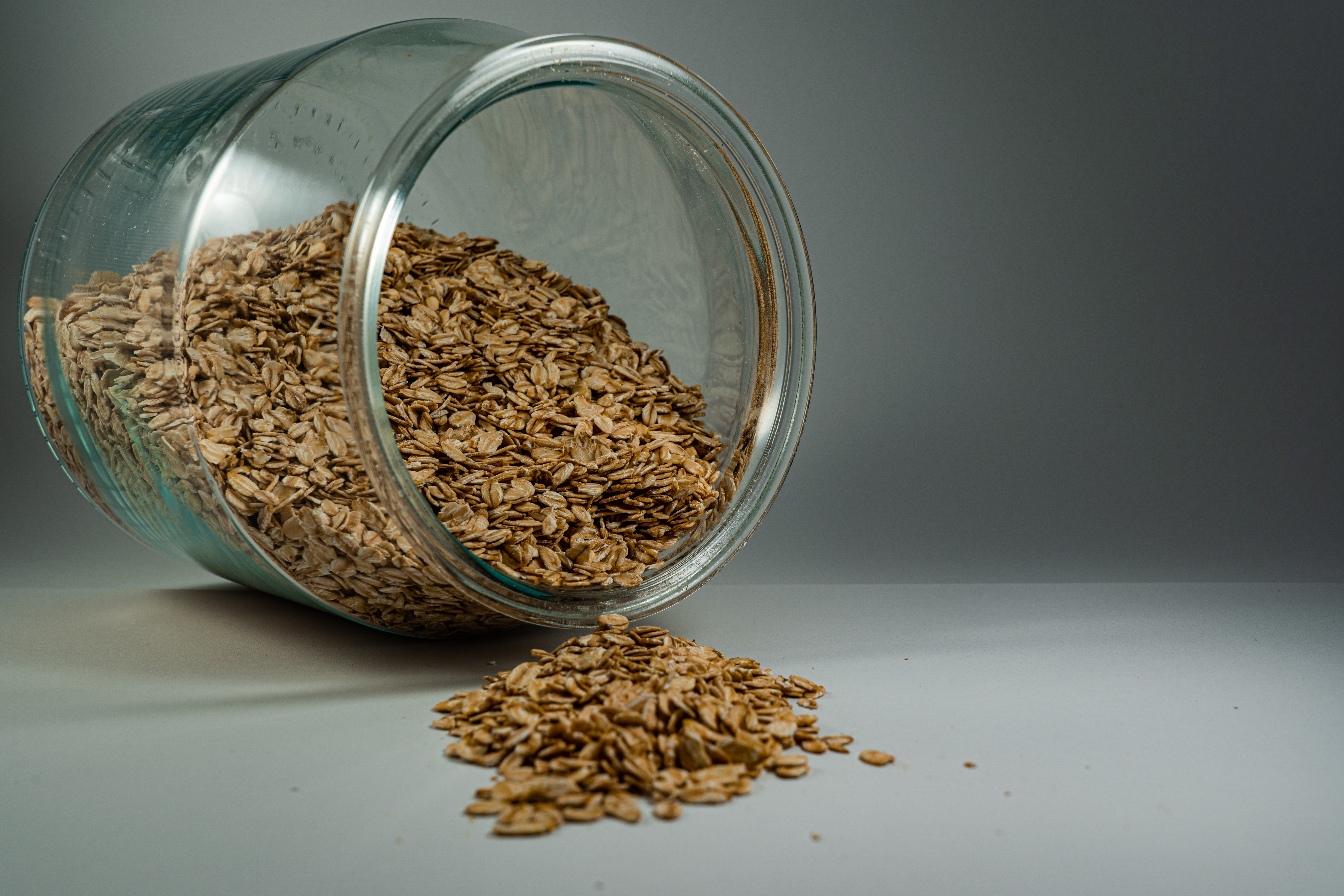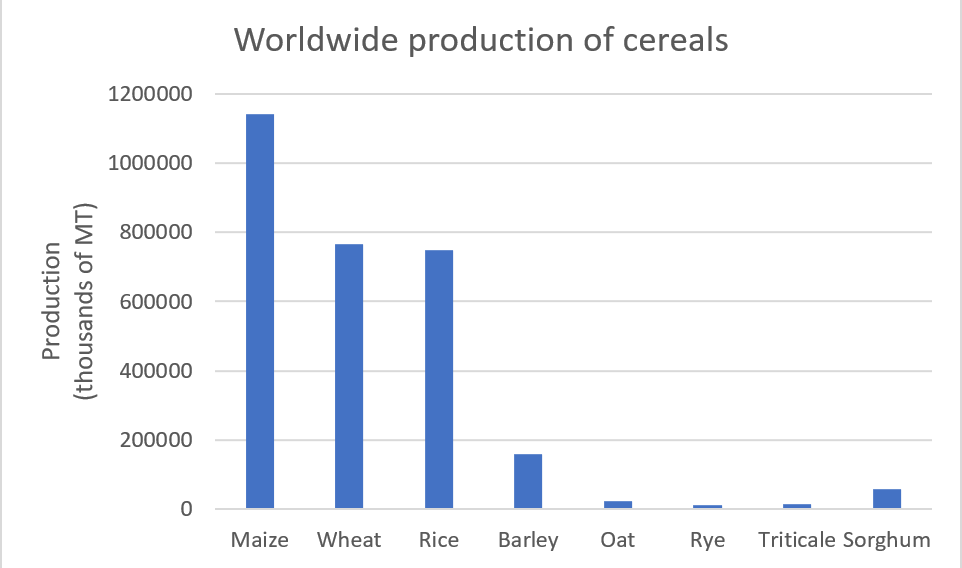Oats – Health Benefits

This post is also available in:
This post is also available in:
![]() Español (Spanish)
Español (Spanish) ![]() Français (French)
Français (French) ![]() Deutsch (German)
Deutsch (German) ![]() हिन्दी (Hindi)
हिन्दी (Hindi) ![]() العربية (Arabic)
العربية (Arabic) ![]() 简体中文 (Chinese (Simplified))
简体中文 (Chinese (Simplified)) ![]() Ελληνικά (Greek)
Ελληνικά (Greek) ![]() Português (Portuguese (Brazil))
Português (Portuguese (Brazil))
Of the different types of food in the world, cereals account for 40% of the food produced. They can grow in several climates, so they are a staple food for many industrialized and developing countries.
The three most widely produced kinds of cereal worldwide are maize, wheat, and rice. But this article will focus on a grain that growers produce only a little. However, it has a historically recognized nutritional value, which makes it worthy of dedicating an entire article to it: oats.
First, we will give some historical information. Experts found the first traces of oats 4500 years ago in northern Western Europe, present-day Russia, and Finland. There, the humid, cold climate and cool summers favored their growth. Initially, they were considered only as weeds for the famous and widely cultivated wheat and barley. Still, as experts discovered oats’ remarkable nutritional value, they gradually acquired a value. Thus, by the year 1500, they were the most popular and most demanded food by the British. After its establishment in Europe, the British and Spanish introduced oats to the Americas, initially taken as horse feed. However, when medicinal properties became known, people became interested in incorporating them into their diet, and medicinal stores started selling them more than in food markets. Finally, in 1900, oats were introduced as part of breakfast foods in the form of the popular oat flakes.
Oats are the sixth most-produced cereal worldwide, behind maize, wheat, rice, barley, and sorghum (Figure 1). The major producing countries are Russia (19% of the world production), Canada (18% of the world production), Poland, Finland, and Australia (all together accounting for 15% of world production). Due to the predominance of rice, wheat, soybeans, and canola, world oats production is decreasing. Still, its consumption in the Americas is increasing significantly due to the knowledge about its nutritional benefits. On the other hand, this European consumption increase is much less noticeable.

Figure 1. Worldwide production of cereals by 2019. (FAOSTAT, 2019)
The oat kernel has a hull rich in insoluble fiber, which the industry removes to process into various foods. After the hull removal, the oat kernel has three main parts. The parts are the germ, the bran, and the endosperm. The first two are rich in nutrients such as protein, healthy fats, and dietary fiber. There is a significant difference between oats and other cereals. While the industry processes oats as a whole grain, it processes other cereals with the bran and germ removed. Hence, the nutritional value of oats for processing is significantly higher than other cereals.
Oats Health Benefits
The most critical nutrient in oats is undoubtedly dietary fiber, and from it, the β-glucans, part of the soluble fiber. β-glucans can imbibe large amounts of water and, due to that, increase the viscosity of the surrounding medium. When we consume oatmeal, the viscosity of the food bolus increases, which increases the feeling of satiety, thus indirectly contributing to weight loss. That is why when we make oatmeal porridge at home, a dense paste forms very quickly.
The primary and most studied beneficial effect of β-glucans is the ability to lower cholesterol. More than 40 studies on humans, of various ages, from different parts of the world, both healthy and hypercholesterolemic, have led to this conclusion. The sum of many mechanisms favored by β-glucans leads to this beneficial consequence. Still, the primary explanation for this is as follows. After someone consumes them, fat and cholesterol reach the intestine, where they need to be transported by bile acids to be absorbed. The β-glucans can trap these bile acids, dragging them to the end of the digestive tract. Thus, fat and cholesterol, not being able to be absorbed, will be eliminated in the feces. Furthermore, upon detecting a decrease in bile acids in the liver, it synthesizes new bile acids from the cholesterol in the liver, favoring the reduction of cholesterol in the organism even more.
The β-glucans can also prevent various diseases. Studies have shown that β-glucans have antitumor activity in breast and colon cancer by contributing to the repair of damaged DNA. Likewise, they increase resistance to pathogenic microorganisms, i.e., those that will cause disease, and decrease the possibility of generating sepsis after surgeries.
The β-glucans are also considered prebiotics. Prebiotics are components that, once they reach the large intestine, serve as food or promote the growth of our beneficial bacteria. They do not promote the growth of harmful ones, which leads to many benefits for the host. Many of our beneficial bacteria feed on β-glucans. As a waste product, they release propionic acid, which also lowers cholesterol in the host. So β-glucans contribute to eliminating cholesterol from the body in three different ways!
Although β-glucans may contribute to lowering blood glucose, which is very important for diabetics, there are no sufficient studies to conclude this claim.
On the other hand, it is worth mentioning oat proteins. Oats have more protein than other cereals: between 12-24%. Likewise, oat protein stands out in lysine. This essential amino acid is crucial for proper nutrition, usually scarce in most cereals. On the other hand, oats are rich in avenanthramides, a phenolic compound found only in oats. This compound has proven effects in preventing cardiovascular diseases and has a higher antioxidant capacity than the antioxidants usually found in cereals. Finally, oats are rich in vitamin E, another potent antioxidant.
So, it is wise to eat the famous oatmeal porridge for breakfast!
References:
- Ciudad-Mulero, M., Fernández-Ruiz, V., Matallana-González, M. C., & Morales, P. (2019). Dietary fiber sources and human benefits: The case study of cereal and pseudocereals. In Advances in Food and Nutrition Research (1st ed., Vol. 90). Elsevier Inc. https://doi.org/10.1016/bs.afnr.2019.02.002
- Daou, C. and Zhang, H. (2012), Oat Beta-Glucan: Its Role in Health Promotion and Prevention of Diseases. Comprehensive Reviews in Food Science and Food Safety, 11: 355-365. https://doi.org/10.1111/j.1541-4337.2012.00189.x
- FAOSTAT. 2019. Crops and livestock products. https://www.fao.org/faostat/en/#data/QCL
- Singh, R., De, S., & Belkheir, A. (2013). Avena sativa (Oat), A Potential Neutraceutical and Therapeutic Agent: An Overview. Critical Reviews in Food Science and Nutrition, 53(2), 126–144. https://doi.org/10.1080/10408398.2010.526725
- Wrigley, C. W., & Batey, I. L. (2010). Cereal grains: Assessing and managing quality. In Cereal Grains: Assessing and Managing Quality. https://doi.org/10.1533/9781845699529








































































